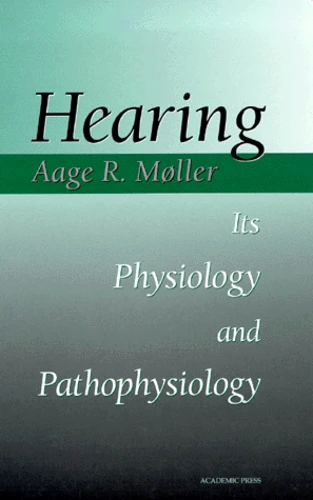Hearing. Its Physiology And Pathophysiology
Par :Formats :
Actuellement indisponible
Cet article est actuellement indisponible, il ne peut pas être commandé sur notre site pour le moment. Nous vous invitons à vous inscrire à l'alerte disponibilité, vous recevrez un e-mail dès que cet ouvrage sera à nouveau disponible.
- Nombre de pages515
- PrésentationRelié
- Poids0.84 kg
- Dimensions16,3 cm × 23,7 cm × 2,7 cm
- ISBN0-12-504255-8
- EAN9780125042550
- Date de parution22/06/2000
- ÉditeurAcademic press
Résumé
Hearing: Its Physiology and Pathophysiology provides detailed information for individuals with diverse educational backgrounds. For the basic scientist, it provides an understanding of the auditory system and how it works. For the clinician, it provides insight into the normal as well as the diseased auditory system. It also provides essential information for those who design and implement technological developments that help the hearing-impaired.
The anatomy and physiology of the ear and the auditory nervous system are clearly presented so that they may be understood with minimal knowledge of the physics of sound (acoustics). Hearing describes the pathophysiology of disorders that affect the middle ear, the cochlea, the auditory nerve, and higher auditory nervous structures, including less common disorders such as acoustic tumors, bilirubinerma, and cortical lesions. Tinnitus is discussed in a separate chapter.
Clinicians, clinical researchers, and basic scientists will turn, to Hearing: Its Physiology and Pathophysiology for a thorough understanding of the anatomy and function of the normal and the diseased auditory system.
Hearing: Its Physiology and Pathophysiology provides detailed information for individuals with diverse educational backgrounds. For the basic scientist, it provides an understanding of the auditory system and how it works. For the clinician, it provides insight into the normal as well as the diseased auditory system. It also provides essential information for those who design and implement technological developments that help the hearing-impaired.
The anatomy and physiology of the ear and the auditory nervous system are clearly presented so that they may be understood with minimal knowledge of the physics of sound (acoustics). Hearing describes the pathophysiology of disorders that affect the middle ear, the cochlea, the auditory nerve, and higher auditory nervous structures, including less common disorders such as acoustic tumors, bilirubinerma, and cortical lesions. Tinnitus is discussed in a separate chapter.
Clinicians, clinical researchers, and basic scientists will turn, to Hearing: Its Physiology and Pathophysiology for a thorough understanding of the anatomy and function of the normal and the diseased auditory system.


